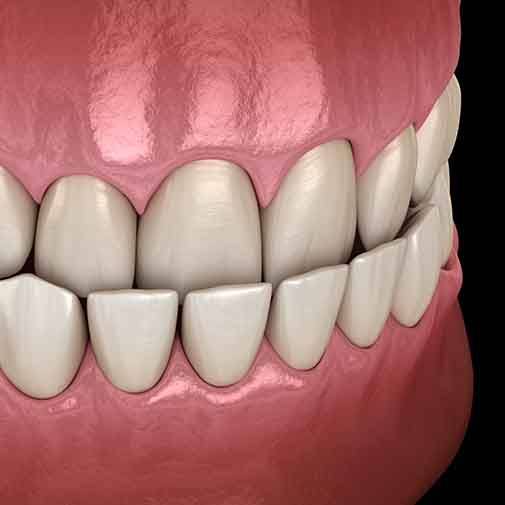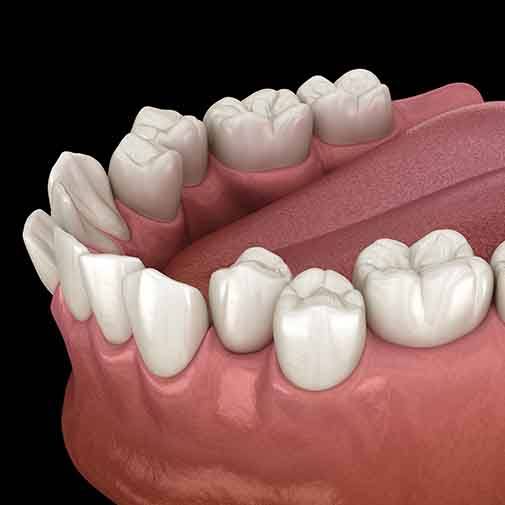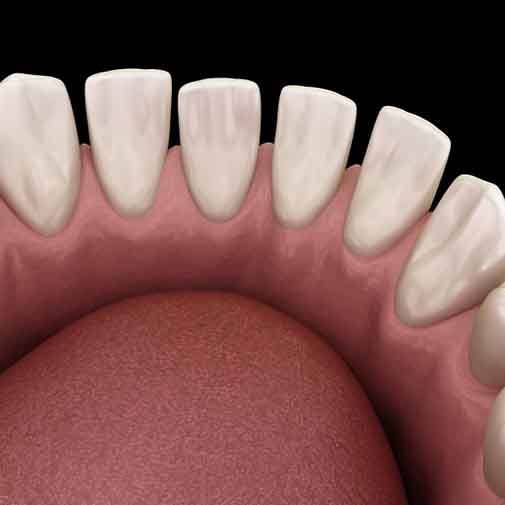Traditional Braces – Columbus, OH
Trusted, Reliable, and Effective Orthodontics

Traditional braces in Columbus can address the most complex cases of bite misalignment as well as crooked or gapped teeth, and they continue to be the most common orthodontic treatment for patients of all ages. At Wigal Orthodontics of Columbus, we proudly offer these effective appliances, and they are now smaller, smoother, and more comfortable than ever before. If you are ready to meet with Dr. Wigal or Dr. Kluemper about traditional braces, call us to schedule your complimentary consultation.
Why Choose Wigal Orthodontics for Traditional Braces?
- Skilled and Experienced Orthodontic Team
- Prevent Discomfort and Oral Health Issues
- Insurance Accepted and Financing Available
How Do Traditional Braces Work?

Dental misalignments can lead to chronic discomfort, hygiene difficulties, and oral infections. Traditional braces consist of a metal bracket-and-wire system that attaches to teeth and causes them to move in the right direction over time. Each bracket is bonded to the tooth’s surface and threaded through with an archwire. This wire guides the realignment of the teeth and must be tightened and replaced regularly to keep the treatment on track.
There are a few key components every patient should understand when preparing to receive traditional braces:
- Patient timelines will vary. No two cases are the same, so the timeline for treatment will vary. Typically, it should take no more than 12-24 months; however, this is different for each person.
- Orthodontics is a two-phase form of treatment. Traditional braces work by moving the crowns before shifting the roots. This process is highly effective in closing unnecessary gaps, creating space for crowded teeth, and realigning bites so that patients can eat and speak easily.
What Orthodontic Issues Can Braces Fix?

While the only way to know for sure if traditional braces can help you is to schedule a consultation at Wigal Orthodontics, these remarkable appliances can address a number of oral health issues such as:
Bite Misalignment

Alignment issues like overbites, underbites, crossbites, and open bites can make teeth difficult to clean and easier to injure while also improperly distributing the pressure of chewing. This can lead to uneven enamel wear as well as TMJ issues and teeth grinding.
Crowded & Crooked Teeth

Crooked or crowded teeth can provide more space for plaque and harmful oral bacteria to accumulate. Realigning your smile with braces can shift these teeth into healthier and more beautiful positions.
Gapped Teeth

Many people find the gaps in their teeth unsightly, and especially wide spaces can leave the gums vulnerable to injury. Braces can bring the teeth closer together to create a more visually pleasing smile that protects the gums.
Caring for Your Braces

A patient wearing braces must take special care to keep their mouth and appliances sanitary by using their toothbrush, dental floss, and special tools to clean the surfaces of their teeth, the spaces between them, and their brackets and wires. It will also be important to avoid crunchy, sticky, acidic, or sugary foods that can deform the metal components or erode or stain the enamel. The patient will also need to keep up with regular appointments at our office so our orthodontic team can make sure their treatment is on track.
Clear / Ceramic Braces

As effective as traditional braces are for addressing minor and complex orthodontic issues, there is one thing patients complain about the most– their visibility. This is why we are pleased to provide an alternative – clear/ceramic braces. Built to be more subtle and discreet, they give patients the option to pursue treatment without feeling self-conscious about their appearance. With clear ceramic brackets, a tooth-colored wire, and matching elastics, they produce the same kind of results as regular metal but without drawing the attention of those around you.
Learn More About Clear/Ceramic Braces
Phase 1 Pediatric Orthodontics

Dental misalignment and crookedness can arise early on, making Phase 1 Pediatric Orthodontics a worthwhile option for kids with alignment issues. Dr. Wigal or Dr. Kluemper can craft a treatment plan that not only realigns crooked baby teeth but also encourages proper development and orientation of the jaw and promotes healthy permanent tooth eruption. With Phase 1 Pediatric Orthodontics, we can take care of issues early so more intensive treatment is not required in the future.
Learn More About Phase 1 Pediatric Orthodontics
Traditional Braces FAQs
Am I Too Old to Get Braces?
As a matter of fact, you’re never too old to get braces! These orthodontic devices work for adults of all ages, including those well into their senior years.
While braces are associated with adolescence, they have no upper age limit. Kids and teens simply have an easier time with them due to having “flexible” smiles. An adult’s teeth are more firmly embedded in the jaw, so repositioning them takes a longer amount of time. “Grown-ups” can otherwise undergo orthodontic work with braces just fine.
Rather than age, whether you can get braces depends on your oral health. It’s possible your smile needs dental fillings, root canals, or periodontal therapy before you’d qualify.
Why Do My Teeth Feel Loose with Braces?
Please don’t worry if your teeth feel loose while wearing braces. In truth, this sensation is a normal part of the orthodontic process.
Remember that braces align each tooth by changing its position. As that process occurs, the ligaments holding your teeth in place will slightly loosen. This loosening ensures your braces can make the proper adjustments and straighten out your whole smile. At the same time, it can make your teeth feel like they’re loose or even “floating.”
Once you’ve had your braces removed, the feeling of looseness will quickly fade. Your jawbone will reabsorb and solidify, allowing your teeth to settle into their new positions.
Can You Drink Coffee with Traditional Braces?
Yes, you can drink coffee with traditional braces. Just note that this beverage could stain your teeth and the brackets cemented to them.
Depending on how much coffee you have, your smile could greatly discolor over the course of treatment. Your teeth may even have uneven splotches when your braces are removed. Should that happen, you may want to consider professional whitening to even out the color of your grin.
With all that said, you can prevent coffee stains while using braces. One method is to sip your java through a straw; it’d then bypass the fronts of your teeth. Another approach is to brush your teeth at least 20 minutes after finishing your coffee.
Can Traditional Braces Fix TMJ Disorder?
In some cases, traditional braces really can fix TMJ disorder. It all depends on the treating orthodontist and which orthodontic problems a patient has.
For example, say your TMJ disorder stems from a poorly aligned jaw. Using braces could bring the upper and lower jawbones into alignment, reducing the strain on their joints. The result would be less pain and stiffness in your jaw over time.
See your dentist to learn whether braces would fix your own TMJ disorder. Through a close oral exam, they can assess your jaw and confirm your situation.













